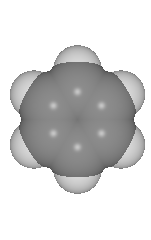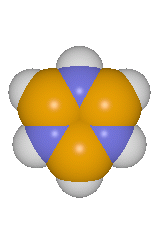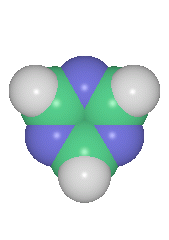




| Introduction | |
| Getting Started | |
| Programs Available at the AHPCC | |
| Computational Chemistry Workshop |
Quantum chemical ab-initio programs attempt to use the principles of quantum mechanics to obtain molecular properties of interest to a chemist or physicist. Such calculations can obtain molecular geometries, vibrational frequencies and barriers to rotation, ionization potentials and electron affinities, and many other properties. Quantum chemistry calculations provide a rapid and inexpensive alternative to experimental techniques for obtaining such properties. They are widely used both as a predictive tool and to confirm or explain experimental results. Quantum chemistry calculations are applicable to a wide range of chemical problems, including enzymology, thermochemistry of combustion, homogeneous catalysis, cluster science, and organic reaction mechanisms.
Many packages are available with varying capabilities, ease of use, and performance. These programs are often quite large and complex. Typical source code may be several hundred megabytes, while executable file(s) can be as large as several tens of megabytes. State of the art calculations using a typical workstation can require as much as a hundred or more megabytes of RAM, a gigabyte or more disk space, and take several days to several weeks to complete. Even larger calculations can be done with more powerful computers or clusters of workstations. Parallelization of these codes is an important step in increasing the capabilities and performance of the programs.
Currently the Albuquerque High Performance Computing Center has the quantum chemistry packages Dalton, GAMESS, Gaussian, and NWChem installed and available for public use. In addition, the molecular visualization programs MolDen, Molekel, RasMol, and XMol and the utility program Babel are available.
It is assumed that you already have an account at the AHPCC. If not, go here.
To use a particular program, you must add the executable path to your PATH variable. The easiest way to do this is to add the following lines in your .cshrc file. You will have to source your .cshrc file to make it active in the current session.
set path = (~chem/bin $path)
The visualization software installed at the AHPCC are all window based programs. To use them from your own workstation or x-term follow these steps:
| Log into your workstation or x-term. | |
| Add an AHPCC machine to your xhost list. (xhost + AHPCCMachine.ahpcc.unm.edu) | |
| Log into an AHPCC workstation. (ssh AHPCCMachine.arc.unm.edu) | |
| Set the DISPLAY environmental variable to your machine name. (setenv DISPLAY MyMachine.unm.edu:0) |
Installation Status
The following table indicates program availability at the AHPCC. Click on a programs name for specific details about each program.
| Version | AIX Workstations |
Azul | Blackbear | SGI Workstations |
Turing Cluster & RCDEs |
|
| Babel | 1.5 | S | - | - | S | S |
| Dalton | 2.0 | - | - | - | - | - |
| DLPoly | ? | - | - | - | - | - |
| GAMESS | 6-12-99 | S | P | P | S | S |
| Gaussian | 94d3 | S | S | S | P | S |
| MolDen | 3.6 | S | - | - | S | S |
| Molekel | ? | - | - | - | S | - |
| NWChem | 3.3.1 | S | P | P | P | S |
| RasMol | 2.7.1 | S | - | - | S | S |
| XMol | 1.3.1 | S | - | - | S | - |
| S / P / - indicates serial / parallel / no version installed. | ||||||
The AHPCC offers a workshop on computational chemistry approximately once a year. The workshop is designed to be an introduction to the parallel packages installed at the AHPCC. Topics include the following:
| An introduction to quantum chemistry and the goals of an ab-initio program. | |
| A comparison of the capabilities of selected programs. | |
| A description of installation, structure, and expandability of selected codes. | |
| An explanation of sample input and output files. | |
| Hands on experience creating input files and running calculations. |
A basic understanding of the UNIX operating system is highly recommended. Knowledge of basic physics and chemistry is also recommended.
 |